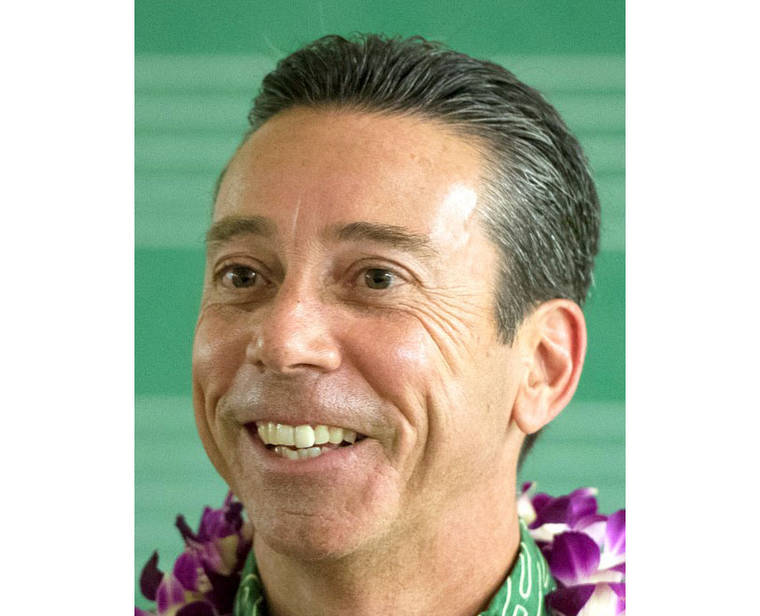The number of international students enrolled at the University of Hawaii at Hilo dipped slightly because of the COVID-19 pandemic, but school officials predict a return to pre-pandemic levels in the upcoming fall semester.
Jim Mellon, director of International Student Services, said that when the pandemic began in March 2020, a small number of international students returned home, but the majority of them enrolled at the time stayed in Hilo.
In fall 2020, a few new international students remained in their home countries and started their studies at UH-Hilo online, he said. Some of them arrived in the spring or hope to attend this fall.
However, Mellon said, “A pretty good number did navigate through all the hurdles and obstacles and challenges they had to navigate through in order to get here.”
Mellon said students coming to UH-Hilo from outside the United States had to comply with “complex and constantly changing” rules and regulations at the federal, state and institutional levels.
That included changing travel restrictions, COVID testing and quarantine requirements, and limited visa processing, among other barriers.
“It was a lot,” Mellon said. “It was a big challenge for a whole lot of students. It was a challenge for me sort of supporting and … guiding students through all this. But it was remarkable how much resilience and adaptability they showed.”
Some of these challenges will persist in the fall, Mellon said. A recently announced vaccine requirement for students returning to campus may be another hurdle for some incoming international students.
It was announced earlier in May that UH students must be fully vaccinated against COVID-19 in order to return to campuses in the fall.
However, the vaccine requirement will take effect only after at least one of the three COVID-19 vaccines currently under emergency use authorization has been approved and fully licensed by the U.S. Food and Drug Administration, which is anticipated this summer.
Depending on where the students are from, vaccine availability might be limited or nonexistent for some students who are coming into the U.S., Mellon said.
According to Mellon, international students typically make up about 7% of the UH-Hilo student body, but in the 2020-21 academic year that number dropped to about 6%, “which wasn’t, in my mind, a huge significant drop.”
Pre-pandemic, the number of international students totaled about 250, compared to 200 in the school year that just ended.
The number of new students who came to UH-Hilo in 2020-21 to earn a degree remained about the same, Mellon said, but international students coming to UH-Hilo on a short-term exchange — those who come for one or two semesters — dropped to zero after those exchange programs were suspended.
Because those exchange students only make up about 15% of the international student enrollment, Mellon said it didn’t have a huge negative impact on overall counts.
Although the application deadline has not yet passed, Mellon said early fall enrollment numbers are looking “pretty good,” and he anticipates the number of new international students coming in likely will reach pre-pandemic counts, about 100 new students each year.
According to Mellon, international students contributed $4.3 million to the local economy in 2019. That does not include direct tuition dollars.
“Just as important, if not more, are the educational benefits of having students from around the world on campus,” he said. “They bring diverse and global perspectives and experiences to campus, and their presences enable local students to learn about other parts of the world, other cultures, other ideas. I think they really enhance the intellectual and cultural environment on campus.”
International students typically start arriving in July and August, UH President David Lassner said during a recent livestream.
“We think we’re pretty ready to bring them in,” he said. “We’ll have to adhere to the travel requirements that are in place at the time.”
Lassner said the university’s vaccination requirement extends to vaccines not only approved by the United States, but those approved by the World Health Organization.
“So, if they’ve been vaccinated with something that’s approved in their country, we’ll accept that as fulfilling the vaccination requirement,” he said.
Some measures will be taken to protect those students who are not vaccinated.
“We’ll probably test them upon arrival,” he said. “We’ll see if they need to be quarantined. There’s some thinking that if we can get the first vaccination shot in them, that that provides some level of protection, and maybe they can start participating while masked up until they become … fully vaccinated two weeks after their last shot.
“It does not appear to be a challenge,” Lassner continued. “It will be additional work, but we’re up for it. We would like to welcome them back.”
Email Stephanie Salmons at ssalmons@hawaiitribune-herald.com.






